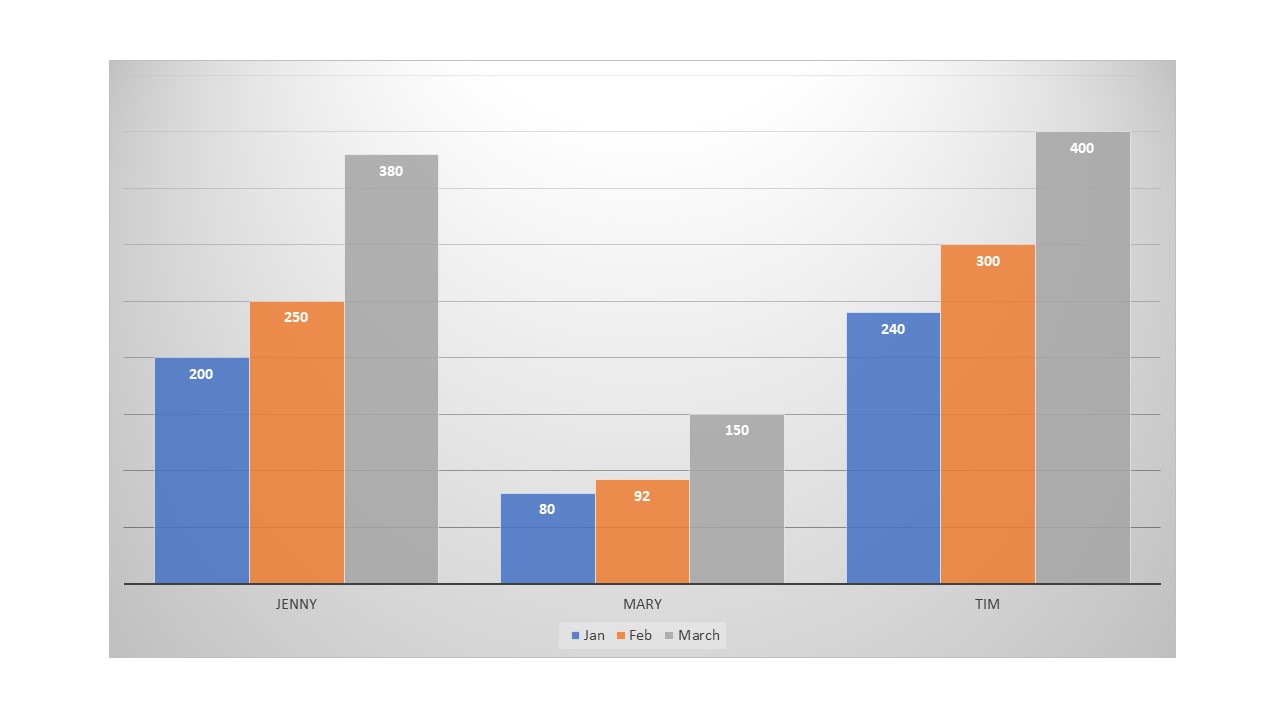Complete Guide to the ieGAT Test (for 2025)
Updated June 19, 2024
- What Is The Admission TestieGAT Test Used?
- Is the ie Admissions Test Difficult?
- What Exactly Is Being Tested On The ie Test?
empty
empty
empty
- How Long Does the ie Test Last?
- How Is the ie Test Formatted?
empty
empty
- How Is the ieGAT Test Scored?
- How to Prepare for the ie Test in 2025
- How to Access the ieGAT Test
- Sample ieGAT Practice Questions (2025)
- What to Expect When Taking the ie Test or the ieGAT Test
- ieGAT – Students Who Already Have a GMAT Score
- Frequently Asked Questions
- Conclusion
Developed by IE University in Spain, the IE Global Admissions test (also referred to as the ieGAT) assesses a student’s decision-making capabilities in highly pressured situations.
It tests for verbal and numerical comprehension abilities as well as logical and abstract reasoning skills.
The ieGAT is accessible globally and not affiliated with any particular curriculum or education system; therefore, all candidates should have an equal chance at being successful.
The test is comprised of six key parts relating to the specific program that is being applied for. Candidates are required to apply logical solutions to problems and scenarios they are presented with.
What Is The Admission TestieGAT Test Used?
The test was developed to screen students applying for university. Available in both English and Spanish, it is required for applications to most of IE University’s Master’s Programs.
The ieGAT can be taken as an alternative to other graduate admissions tests, such as the GMAT, GRE or LSAT tests, in some instances.
Prepare for the ieGAT with TestHQ
Is the ie Admissions Test Difficult?
The ieGAT does not test academic or general knowledge.
An ability to think logically, comprehend scenarios from text or numbers and perform under pressure is required. This means that how difficult the test feels will depend on the candidate’s critical thinking skills.
The assessment does use a multiple-choice format, which some students may find reassuring.
Do keep in mind that repeat tests are not allowed.
What Exactly Is Being Tested On The ie Test?
The ieGAT measures a student’s proficiency in the following key areas:
Verbal Reasoning and Comprehension
The verbal reasoning part of the test requires candidates to be able to order and extrapolate from information, and organize and understand economic data presented in word form.
This is shown by answering a set of multiple-choice questions relating to this.
Numerical Reasoning and Comprehension
The numerical comprehension section assesses a candidate’s ability to perform basic calculations as well as the strength of their quantitative reasoning skills (including distance, shapes, space and patterns).
Take an ieGAT Practice Test with TestHQ
Logical and Abstract Reasoning
This section of the exam has the fewest questions. It assesses a student’s ability to uncover complicated rules and find conclusions within abstract problems.
How Long Does the ie Test Last?
Candidates should expect the assessment to last between 90–120 minutes which includes some preparation time. Breaks are not allowed once the test has started.
Questions will not be answered regarding exam content once the assessment has commenced; therefore, it is essential to ask for clarification about anything beforehand.
An IE representative will be on hand to assist with any non-content-related issues that may occur during the examination.
How Is the ie Test Formatted?
There are usually two options for taking the test:
- Paper and pen
- Online
Currently, all stages of the ieGAT process are available exclusively online due to the COVID-19 pandemic (except for candidates in South Korea, who are still able to register at the IE Business School Korea Office in Seoul on certain dates).
Paper and Pen
Traditionally, in the pen and paper version of the exam, there are two parts.
First, students are presented with four passages on economics. This is followed by nine related questions designed to test the students’ comprehension abilities.
The questions are in a multiple-choice format and include four options to select from. Some questions may have more than one correct answer.
In the second part of the ieGAT exam, candidates will face logical reasoning questions. These are similar to the questions that appear in the online version of the test.
Each subsequent section has approximately six questions, with four numerical/verbal reasoning sections and four logical thinking sections.
Online
The online test is made of various multiple-choice elements. Candidates are presented with questions and information with the options to answer:
- True
- False
- Cannot Say
Without any breaks, the test should take approximately 90 minutes. There are seven sections, each with its own instructions and time constraints:
Graphic Numerical Reasoning:
This section has 36 questions. Students should aim to complete this in 15 minutes.
Here, students are given graphs and other images and must decode information from them.
Verbal Reasoning:
This section has 49 questions. Students should aim to complete this in 12 minutes.
Here, students must read a passage of information and answer questions from it.
Applied Numeracy:
This section has 20 questions. It should be completed in 16 minutes.
Here, the exam assesses numerical abilities including understanding distance or area.
Deductive Logical Thinking:
This section is made up of 10 questions and should take only 5 minutes.
Here, students will have to identify the next symbol in a sequence, or which one relates to changes within a sequence.
Inductive Logical Thinking:
This section has 12 questions and should be finished within 12 minutes.
Here, students will have to assess and categorize shapes, following unspecified rules they must distill themselves.
Information Handling:
This section has only one question and will take around 15 minutes.
The information handling portion of the assessment will allow candidates to show how they can understand, prioritize and process the information they are given and their ability to follow instructions.
Creativity:
The final section has only one question. Students should have 15 minutes left to complete this part of the assessment.
Here, students may the opportunity to show their scope for creativity within problem-solving. They may be asked to create a unique image following a set of shapes or instructions.
Both forms of the test are essentially assessing the same skill competencies, even if they are in slightly different formats.
If you need to prepare for a number of different employment tests and want to outsmart the competition, choose a Premium Membership from TestHQ.
You will get access to three PrepPacks of your choice, from a database that covers all the major test providers and employers and tailored profession packs.
How Is the ieGAT Test Scored?
Students should attempt to answer as many questions as possible; remember, marks are awarded for precision as well as speed. Scores are calculated both on the number and accuracy of questions answered.
There are multiple sections and each one is not weighted equally.
The scores are not standardized, and pass marks are dependent on each institution.
How to Prepare for the ie Test in 2025
The nature of the test dictates that no special test preparation or studying is required.
The ieGAT’s official website does suggest that candidates should try to get a restful sleep the night before the exam; this should maximize students’ abilities to think clearly and answer coherently.
On the IE university website, there are videos illustrating some examples of the questions that could appear.
Candidates can also go to TestHQ for a preparation pack including example questions. These will help with becoming familiar with the format of the test questions.
More general guides are available for logical reasoning, numerical reasoning, verbal comprehension and abstract reasoning.
These will help with practicing the skills needed for, albeit not the format of, the test.
Once familiar with the format of the test, questions should be attempted under timed exam conditions to give a true representation of the candidate’s score.
How to Access the ieGAT Test
When taken online, the test is taken using a student’s own computer. Pen and paper tests are taken at an assessment center.
Regular dates for taking the ieGAT are available. Students must register for an upcoming session on the ieGAT website. Then, the test is connected to at the designated time using the student’s computer.
Previously, once students had signed-up, they were able to select a suitable time and location to take their exams. Due to the current restrictions relating to COVID-19, the IE University has made the entire application process available online to students internationally.
Basic calculators and a dictionary are allowed, though time constraints should be kept in mind when using these materials.
The registration and a minimum of 25% of the application process for IE University must be completed before sitting the ieGAT.
Details can be found on the ieGAT website.
All candidates should note that, once their test is completed, they have only 30 days to complete the application process before their test score is rendered inadmissible.
As the test cannot be retaken, it is advisable to be organized and complete everything required within the allotted time.
Sample ieGAT Practice Questions (2025)

Three university friends decide to make a big effort to increase their savings by 90% over three months but only one succeeded.
Which of the three managed to do so?
a) Tim
b) Jenny
c) Mary
Which is the missing combination of letters represented by the question mark?
KLMNO is to LOMN as XFRCI is to ?
a) FICR
b) XRFC
c) IFCR
d) XIFR
As can be seen from these two example questions like those seen in the ieGAT, the answers can be correctly chosen based solely upon the information presented within the questions and the use of logic skills.
However, the IE University is keen to stress that the test cannot be studied for in advance due to the variable and unpredictable nature of the questions and any third-party websites offering practice papers or paid preparation programs are unofficial and not affiliated with the IE itself.
The official IE website has a small selection of videos that offer examples of the types of questions that can be found on the ieGAT.
What to Expect When Taking the ie Test or the ieGAT Test
The format of the test is outlined above. Once the registration is completed, the candidate will be sent further information and instructions on how to proceed with their application by the IE University.
Before the exam date, students will be sent technical specifications so that they can ensure their device (laptop or computer) can access everything correctly.
On the day of the assessment, students are required to promptly arrive at the assessment center or log on (preferably 15 minutes before the exam time). Late arrivals will not be allowed to sit the exam. Students must have their valid ID ready.
The ieGAT is available in both English and Spanish. Students should take the exam in the language that correlates to the study program that they are applying for.
Some practice questions are supplied before the exam so students can become familiar with the format.
ieGAT – Students Who Already Have a GMAT Score
The ieGAT can be taken by students who have already have a GMAT score.
The admissions committee will evaluate both test scores when considering applications.
They recommend that students who have a valid GMAT score disclose this when submitting their application for the ieGAT.
Prepare for the ieGAT with TestHQ
The IE admissions test – or ieGAT – is an assessment that was originally developed in Spain. It is commonly used as part of the assessment for colleges and universities when they are considering candidates for courses.
The passing grade can vary from college to college and will often depend on the course being applied for.
Candidates taking the IE admissions test will be assessed on their cognitive and decision-making abilities and is designed to look at six key areas:
- Verbal reasoning
- Verbal comprehension
- Numerical reasoning
- Numerical comprehension
- Abstract reasoning
- Logical reasoning
The ieGAT is an entrance exam used to assess applicants for the IE University, and it evaluates for proficiency in verbal and numerical reasoning and comprehension, as well as logical and abstract reasoning.
This test is designed to be challenging, and you can only take it once – so you must be confident in skills like basic literacy, understanding written information and extrapolating using logic.
You will also be expected to be able to perform basic mathematical calculations and have a good grasp of the principles behind distance, shapes, patterns, and space.
The ieGAT is not about what you have learned, or your general knowledge – it is assessing your critical thinking ability and the way you use logic to solve a range of problems.
You will be asked questions in the online ieGAT in seven sections, each looking at a different skill set.
- Graphic numerical reasoning
- Verbal reasoning
- Applied numeracy
- Deductive logical thinking
- Inductive logical thinking
- Information handling
- Creativity
Unlike typical assessments, the ieGAT test isn’t looking at whether you know a lot of facts and information. It is designed to assess your critical thinking skills as well as your ability to deduce information from texts you are given.
While the assessment itself may not be considered hard in a traditional sense, it is important to remember that there are no resits.
If you do not reach the required pass mark, you will not be offered a second chance.
To take the ieGAT online, all students are required to have:
- A fully charged laptop/computer (with a working webcam)
- Calculator
- Pencil and scrap paper for notes/workings out
Students may be required to have:
- Smartphone or tablet (if they are asked to video call with the admission’s committee staff)
- Dictionary
No. There is an application fee associated with taking the test. Other costs may be incurred depending on exactly which assessment you take.
Due to the nature of the ieGAT assessment, this is a very difficult test to prepare for.
Unlike other tests, it is very difficult to revise and practice tests can be unreliable. There is a simulation assessment on the IE admissions website which can help you to get an idea of the style of questions you are likely to find.
It is also a good idea to make sure that you do some general assessment prep ahead of your test to ensure that you can give your best performance on the day. Some useful tips include:
- Get a good night's sleep to maximize your ability to focus and concentrate
- Eat a balanced diet, high in protein and nutrients which will help you to maintain energy levels
- Practice mindfulness and stress-relieving techniques if you are someone who typically feels anxious before and during assessments
The majority of the ieGAT assessment is made up of multiple-choice questions. The exceptions to this are the final sections of the test which are the information handling and creative sections.
Scoring is relatively complicated as not all questions are scored equally.
Scores are given based on the speed of answers and accuracy, meaning that it is important to answer as many questions as possible within time limits, but also as accurately as possible.
The mark that you will need to pass will vary depending on the institution you are applying to.
When you complete the ieGAT, you are being marked on the number of correct answers you give, but also on how quickly you answer – so speed and accuracy count.
The test is not standardized, however, so the score you need to pass will depend on what the institution or program you have applied for requires, and this is not published.
It is worth remembering that to give yourself the best chance for success, you should aim as high as possible – not only to guarantee to pass at the required mark but also because you can only take the test once.
The ieGAT is a test used to assess candidates for entry to various programs at IE University and is marked on the number of correct answers as well as how quickly you answer.
Each institution will have a minimum score that you will need to achieve to pass, and if you do not get this then you will have failed.
Failing the ieGAT is likely to mean that you will not be considered for the program that you have applied for, and you can only take the assessment once.
The IE College of Architecture uses the ieGAT as part of the admission process to study a master’s degree.
The score you will need to get through the application and be considered will depend on the degree program for which you have applied.
The ieGAT lasts between 90 to 120 minutes including preparation time and time for reading instructions. Once the assessment starts you will not be able to take a break.
The test can be taken using paper and pen, although most tests are now taken online.
The online assessment is split into seven sections, which have different numbers of questions and time allotted to them:
- Graphic Numerical Reasoning: 36 questions, 15 minutes
- Verbal Reasoning: 49 questions, 12 minutes
- Applied Numeracy: 20 questions, 16 minutes
- Deductive Logical Thinking: 10 questions, 5 minutes
- Inductive Logical Thinking: 12 questions, 12 minutes
- Information Handling: 1 question, 15 minutes
- Creativity: 1 question, 15 minutes
If you want to practice the ieGAT, there are a few websites that can help. There are practical examples on the ieGAT website, which are representative of the questions in the assessment.
For the best practice tests, we suggest TestHQ as a resource – aside from the tests, there are additional free and paid-for resources including Prep Packs full of really useful revision tips and tricks to help you ace the test.
Getting prepared for the ieGAT does not need to cost money – there are plenty of free resources available online.
One of the first places you should look is the IE University site, which is designed to give applicants all the information that they need to ace the test and get into their preferred school.
For a whole range of free tests, TestHQ is an excellent resource, and if you want even more help, information and resources then the Prep Packs are a great investment.
The ieGAT is an assessment that is used only for entry to IE University institutions, whereas the GMAT is a widely used assessment used for entry into law universities across the US and Canada as well as in other countries.
The GMAT can be used for entry to IE University as well, and although it is considered to be a harder assessment, passing it can open more doors in terms of program entry.
Conclusion
The ieGAT can, in some cases, be taken as an alternative to other standardized academic tests and is a prerequisite for students to study many of the programs offered at IE University.
As it is not an exam of specific academic knowledge, it can be a very useful tool for students who wish to test their strengths in certain skill areas, particularly if they plan to enter the workplace in a role that will require them to take management-style decisions in a pressurized and/or high stakes environment.
Any student who feels unsure about anything relating to the ieGAT should contact their university admissions team.






